The faded grandeur of Europe’s seaside towns offer major throwback appeal. Arts, culture and a healthy dose of kitsch have fuelled the resurgence of these coastal enclaves.
23 March, 2021
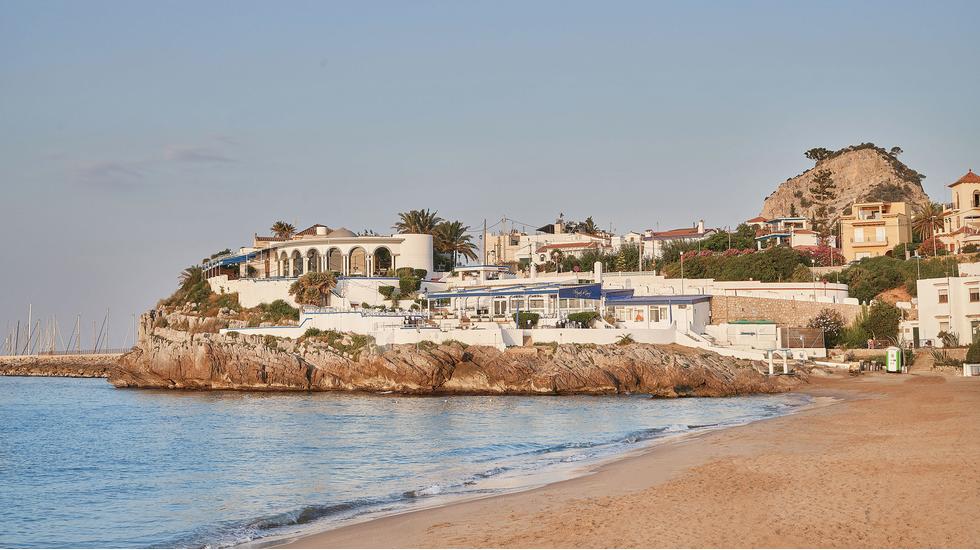
The article first appeared in Vol. 26: Nostalgia.
Her
glare down the barrel of the lens is cold and scornful, the
children in their swimmers preoccupied by their disconcertingly
green mint ice creams with old- fashioned wafer cones. There are
net curtains and a Formica-topped table. It is one of Martin Parr’s
most iconic photographs, from his mid-1980s series The Last Resort,
and it says everything you need to know about lost British seaside
towns.
Shot between 1983 and 1985 in a dilapidated New Brighton – the
seaside resort on the tip of the Wirral, across the Mersey from
Liverpool – it is the series that would come to define Parr’s
super-saturated career of wry portraits of the mundane. A beauty
pageant; wasted chip trays and crying babies; cigarettes and
sunbathing on concrete beside a dirty excavator – the heyday of
Victorian holidays as faded as the weatherworn paint jobs on tacky
stalls lining the promenade.
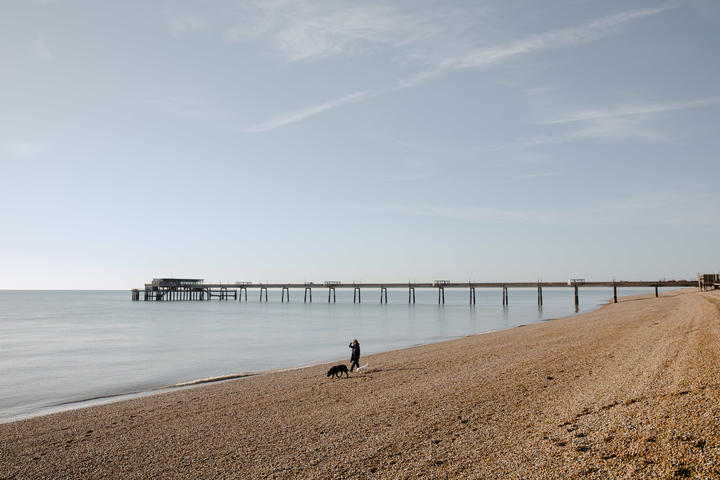
When the package holiday boom packed the Union Jack shorts off
to the Costas, the deckchairs and donkeys died out from Morecambe
to Margate, and
you were more likely to see a hanky on the head in Rhodes than in
Rhyl. Poverty crept in and the swathes of empty buildings became
temporary bed and breakfast accommodation for many of the most
troubled. The socioeconomic problems were complex, but the decline
clear – from the late 1990s onward many would have bitten your hand
off for even a return to the Thatcherite Britain documented in The
Last Resort. Does a cascade of two-penny pieces from a coin-pusher
still make a sound if there’s nobody to hear it?
But still, little evokes a longing for days gone by as potently
as the faded glamour of a seaside town. Even in a state of
dystopia, there’s something irresistible about sticks of rock and
cockles at the end of the pier. It’s this soiled nostalgia that
informed Banksy’s Dismaland “bemusement park”, which brought
150,000 visitors to Weston-super-Mare in the summer of 2015. Some
220 miles almost directly across the country, though, a radical
regeneration project has tapped into that essence of seaside
holidays past, trading Banksy’s doom and gloom for bright lights,
bags of retro and city style.

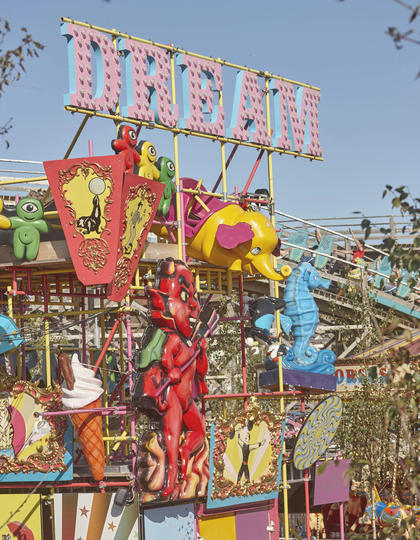
The second £25m reboot of Margate’s 1920s Dreamland amusement
park opened in 2017 and has already seen Damon Albarn’s Gorillaz
host its own mini-festival. Street-food trucks, a roller disco and
diner, a gastropub and a hip rooftop bar with a barbecue confirm it
as a slice of East London by the sea. It’s not the first cultural
catalyst for regeneration in a town that had slumped into seemingly
terminal decline, however. Dreamland’s revival was predated by the
David Chipperfield-designed Turner Contemporary in 2011, a project
heavily supported by former art world enfant terrible Tracey Emin,
who grew up in the town. Through the arts and entertainment, two
things long associated with Britain’s seaside towns, Margate has
found its feet again. The nostalgia and the kitsch are not lost.
Character is retained, edges softened, and nowhere more evidently
than at The Reading Rooms, a Grade II-listed Georgian
townhouse turned luxury bed and breakfast with lashings of style
and substance. Here the patina of time is juxtaposed with
unrestrained luxury, light years from the net curtains and grandma
carpets of the archetypical seaside B&B.

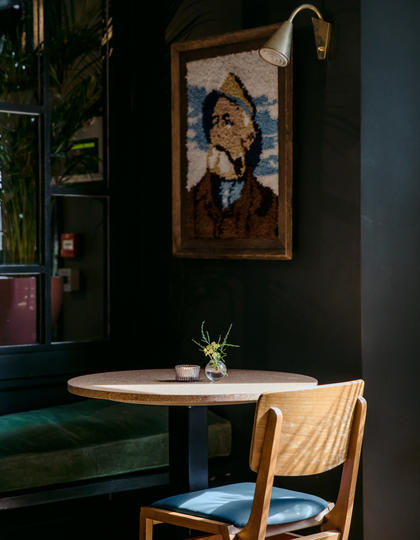
Kent at large has enjoyed somewhat of a renaissance, with nearby
Ramsgate boasting the handsome Albion House Hotel and Deal home to
The Rose, a remarkable renovation of a rundown, high-street boozer.
Here interior designers Harding & Read, alongside creative
consultancy from Michelle Kelly, have transformed the old pub’s
eight bedrooms with consideration and inventiveness. Vintage
touches like a gaudy old dressing table are paired with bold
colour-blocking and contemporary art, while wicker furniture and
floral headboards meet indie design magazines and luxury bed
linen.
Downstairs the kitchen’s output is overseen by executive chef
Rachel O’Sullivan, formerly of London’s lauded Polpo and Spuntino,
who has put thoughtful British comfort-food classics centre stage.
These are not big nor clever, but instead finely executed and
smear-all-over-your-lips scrumptious. With cocktails and craft
beers and baristas knocking up flat whites with coffee from
London’s Climpson & Sons, it’s quite the transformation for a
venue with a spirited past. Deal might
not be a Skegness or a Great Yarmouth, but with its arcades and
pool halls it’s still a far cry from the seaside idylls of Padstow
or St
Ives. In The Rose, this town on the east Kent coast has a
destination hotel capable of becoming its own catalyst for
change.
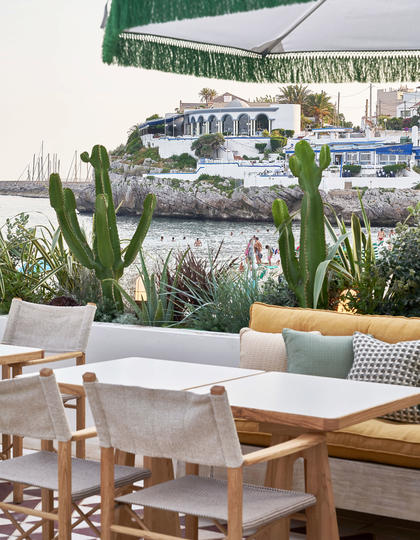
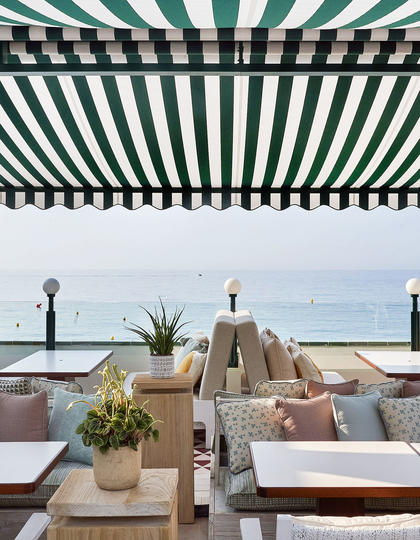
Of course, change works in cycles. Many of the package holidays
that decimated Britain’s seaside towns jetted fresh pale skin to
Spain’s eastern coast to be turned pink by the sun. By the turn of
the 21st century, air travel had become so ubiquitous and
cost-effective that their sons and daughters could be found lining
the shores of the Caribbean. No longer so “exotic”, many Spanish
towns now face similar disrepair. Some 30 kilometres south of
Barcelona
a small, abandoned 1950s hotel on Platja de Garraf had cut a
forlorn shadow for many a year. Bumped right up to the sand on a
small bay lined with charming wooden beach huts, it reopened last
year as Little Beach House Barcelona, an extension of the Catalan
capital’s lavish outpost of the famous creative members’ club Soho
House.
With a throwback design that nods heavily to the building’s
past, the 17-bedroom hotel and restaurant is packed with
custom-made furnishings, found objects, statement pieces and
contemporary art, and occupies a prime position on a beach where
time has long stood still. With rattan and hessian, soft
Mediterranean hues and lush indoor foliage, the waves softly
lapping just a few feet from its walls, Little Beach House Barcelona conjures notions of an
age consigned to bleached 35mm film and vintage postcards.
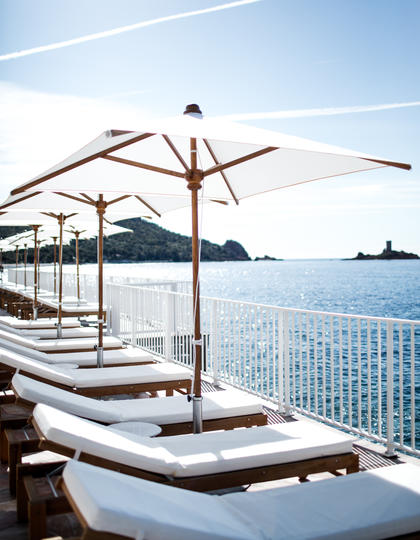
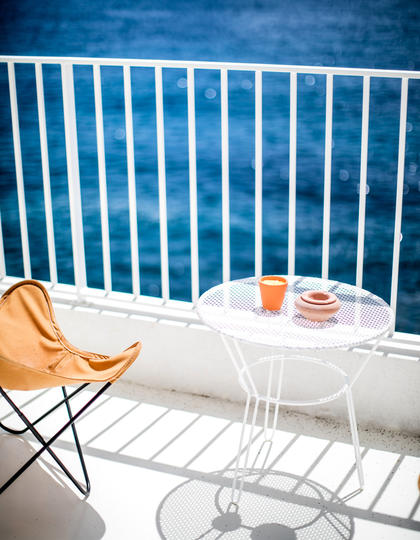
It’s a sensation that’s replicated on the Côte d’Azur.
Sandwiched between the Hollywood glitz of Cannes and
Saint-Tropez on a sleepy pebble beach with old-world appeal,
Hôtel Les Roches Rouges delivers big on the
classic French Riviera. Without the bombast or glamour of its
neighbouring resorts, authenticity can be found in abundance at
this sanctuary of 1950s modernism. It is Riviera luxury sans the
oligarch super- yachts, Provence by the sea – slow food and slow
living, pine trees over palm trees, subtle and seductive. With
Parisian architecture firm Festen and visionary French hotel
entrepreneur Valéry Grégo having chipped away at bad renovations
from the 1980s and 1990s, understated style has returned to another
unloved spot threatened to be washed away by the sands of time.
In his days as the theatre organist at Blackpool’s Tower
Ballroom, Reginald Herbert Dixon saw it all. Holding down his
position from March 1930 until March 1970, the prolific musician
witnessed transformative years for the seaside holiday. I Do Like
to Be Beside the Seaside was his signature tune. And they did.
Sure, they still do, but travel has lost the ability to marvel in
its own right. Experiential travel, cultural travel, transformative
travel… they all play into a game of social media one-upmanship.
The seaside today’s traveller wants to be beside is untouched and
pink, as well as an Instagram first that’s sure to break your likes
total. But when the likes are gone, how do you feel inside?
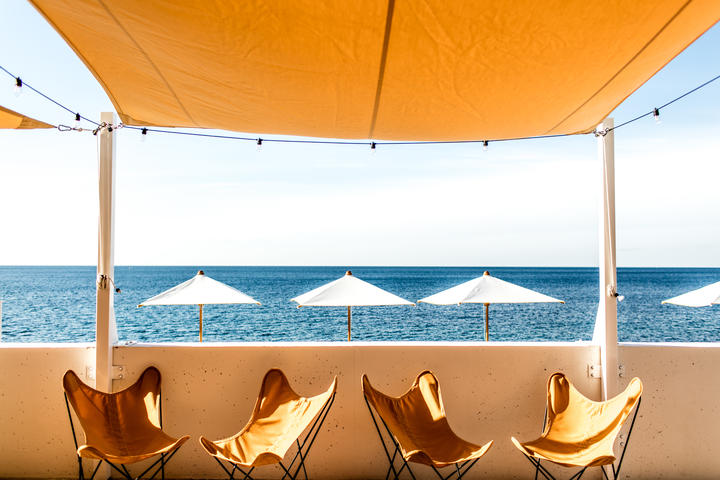
Be it the 1950s style of the Riviera remembered from films you
think you saw, the vintage charm of a beachside hotel once destined
to live out its final days in dereliction or handsome design
projects that immerse you in the strange allure of waned
amusements, there’s an irreplaceable quintessence to the seaside
resort embedded in our collective imagination. From the Basque
Country’s Biarritz to Blankenberge in Belgium, Europe is littered
with towns that have the ability to tug at your heartstrings with
their piers and windblown seafront shelters, salty air and
seagulls. Blackpool
might not be the paradise it was when Reg Dixon tinkled the ivories
of his Wurlitzer for the first time, yet scratch the surface and
the magic remains. We do like to be beside the seaside – and now is
the time to look closer to home.
